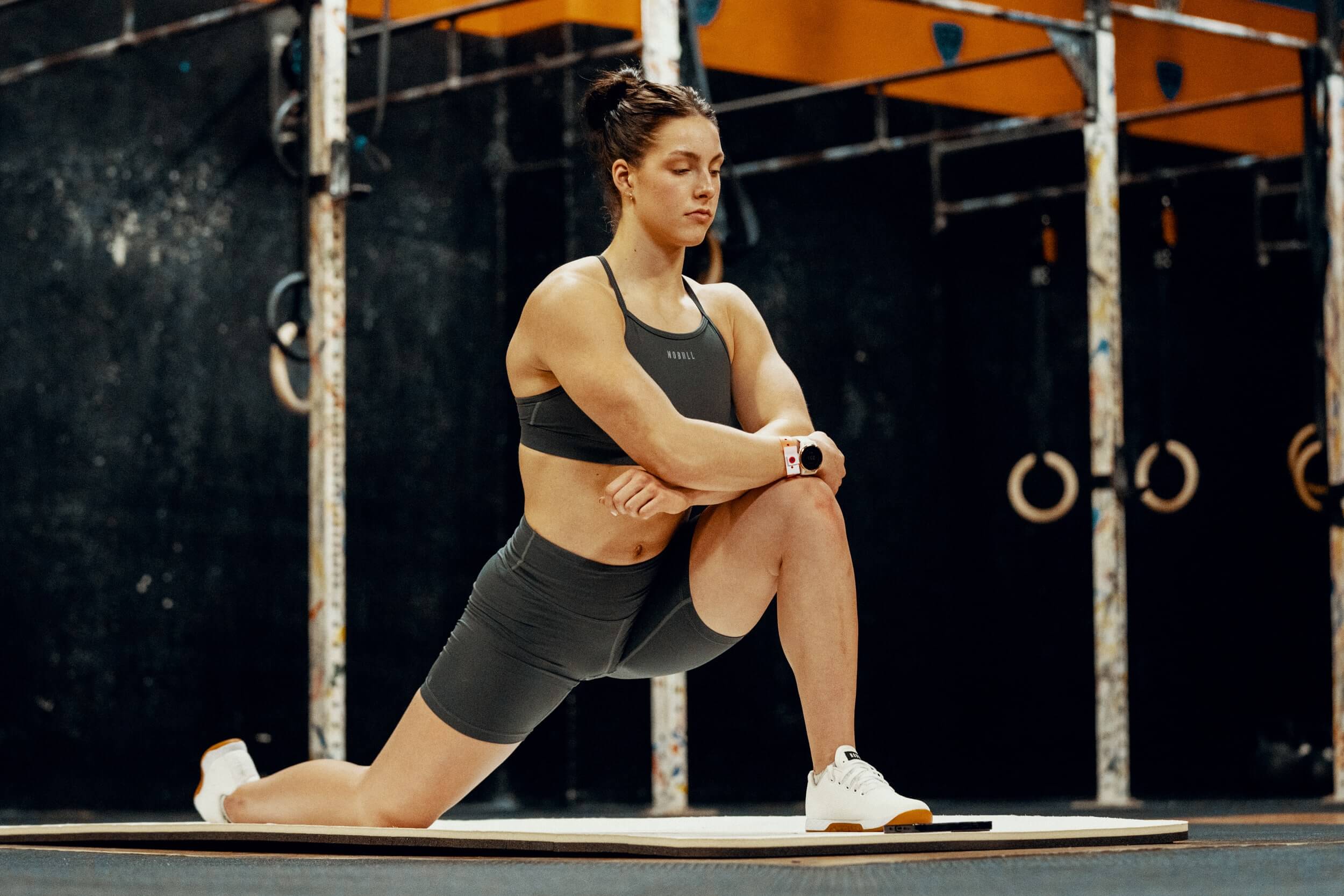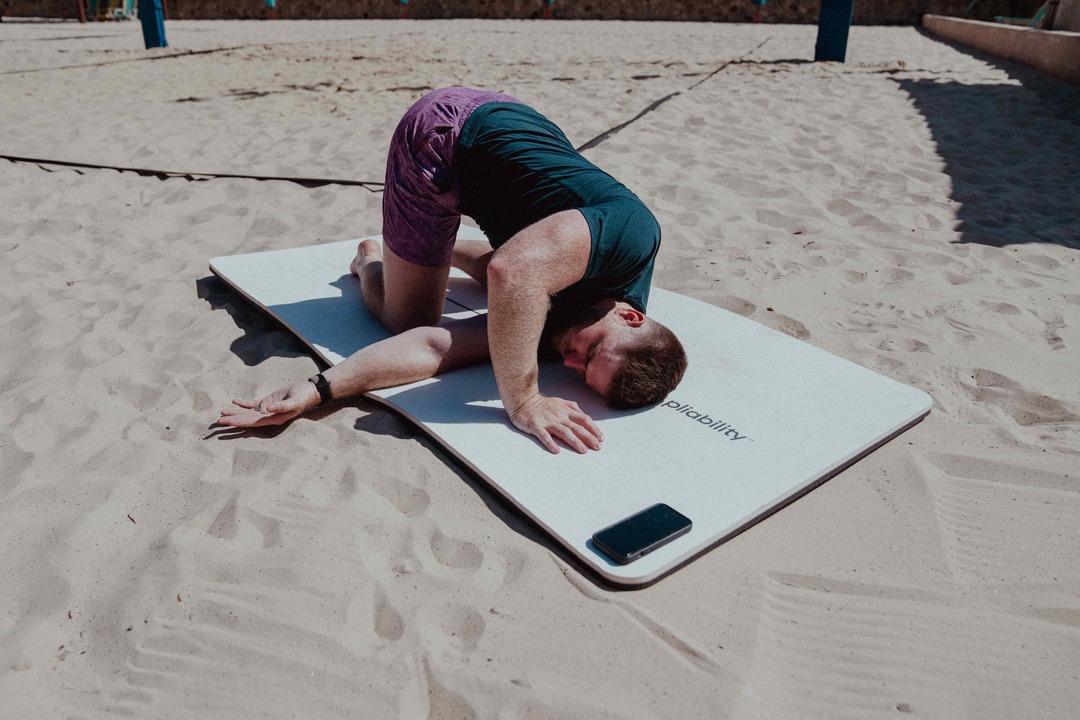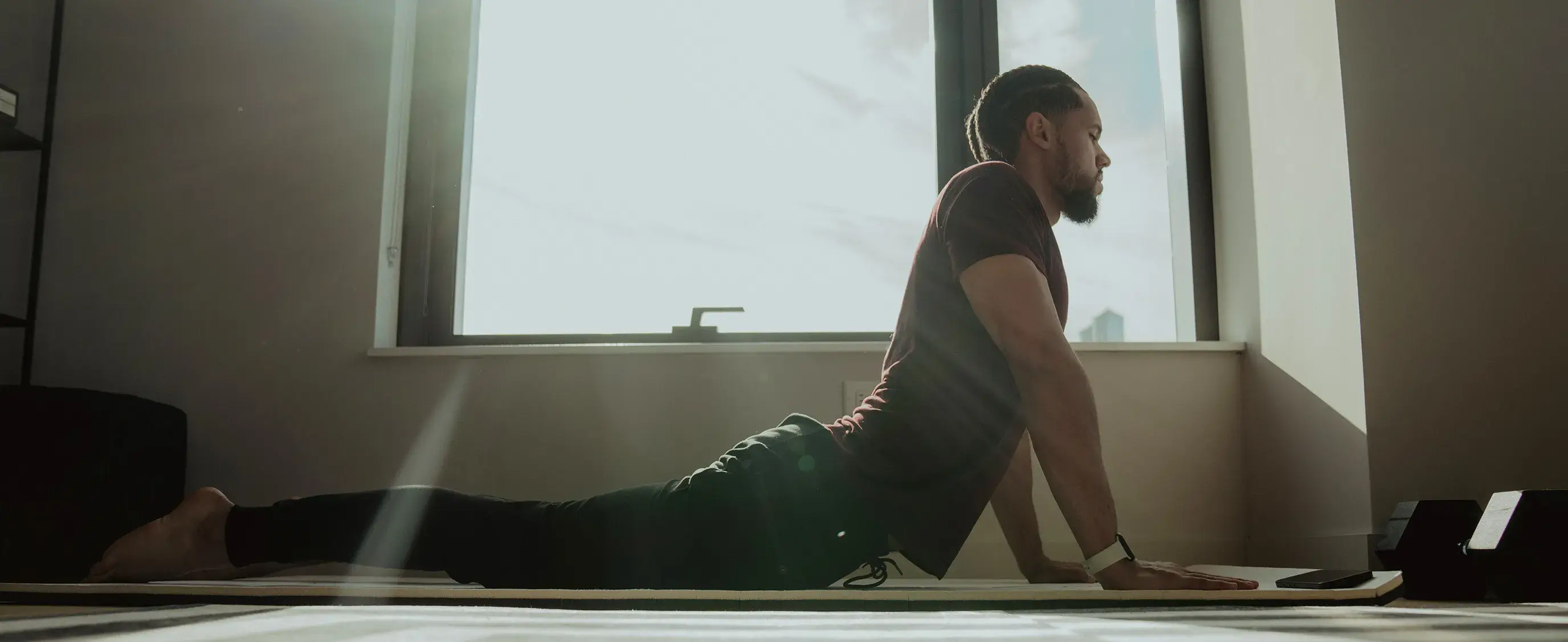Have you ever felt sore after a challenging workout or game and wondered what's the best way to recover? You're not alone. Both can slow you down and impact your performance, whether stiffness or muscle soreness. Research shows that athletes who consider recovery strategies before they start to feel sore after intense training or competition can recover quickly and effectively. One of the most critical recovery decisions is whether to use active or passive recovery techniques. In this article, we’ll explore the benefits of active and passive recovery, Best Recovery Tools for Athletes and share how to choose the right one for your recovery goals. Doing so will help you feel great, stay active, and perform at your best without lingering soreness or stiffness.
Pliability's mobility app can be a valuable tool for helping you recover quickly and effectively. It will help you regain feeling great, stay active, and perform at your best without unnecessary soreness or stiffness.
What is Active and Passive Recovery?

Whether aiming for a new personal best, training for your first race, or jogging to stay fit, more is better, right? It’s true that increasing your weekly miles and adding more speed work is the key to getting faster to an extent.
But there is such a thing as pushing too hard. Getting adequate rest is essential to help your body perform at its peak.
Active vs. Passive Recovery: Why It Matters
“The importance of recovery cannot be overstated,” says Emily Booth, NASM-certified personal trainer and running coach based in Denver. “As difficult as it can be for some runners to accept, you’ll only reap the benefits of your hard work if you allow your body to recover. That is when the magic happens.”
Now, “recovery” doesn’t mean you have to lie on the couch and do nothing all day (though it definitely can if that’s what you think your body needs). You can rest with a “passive” recovery day or get in some gentle movement for some “active” recovery.
Here’s more about the difference between active versus passive recovery and how to choose the best for you.
Why is Recovery So Important?
You need rest days whether you’re a novice runner, a weekend warrior, or a world-class athlete. All that hard training goes to waste if you cannot properly recover from the workouts you’re doing, says Jeff Gaudette, owner and head coach at RunnersConnect.
Recovery is when the body heals itself from the training you do to come back stronger. Training has several principles, including:
- Overload
- Adaptation
- Specificity
- Individualization
- Reversibility
- Recovery
Balancing Training and Recovery for Better Running
To become a better runner in the future than you are today, you must overload your system with a specific new training stimulus, such as running more weekly miles or adding in speed workouts.
If the new stimulus is introduced with appropriate volume and intensity, your body adapts and your fitness improves. Without proper recovery, instead of adapting and getting stronger, you’ll eventually break down and either be too fatigued to do meaningful workouts or, worse, end up with an overuse injury.
Finding the Right Balance for Recovery
There’s no magic formula for dialing in the exact amount of rest your body requires. This is where the principle of individualization comes in, says Booth, just as some individuals respond faster to training than others, some athletes need more recovery.
Unfortunately, there is no universal answer to how much rest you need, as myriad factors affect recovery. Aiming for at least one rest day every seven to ten days is a good place to start, though, she says.
What is Passive Recovery?
Booth says passive recovery is taking an actual rest day where the body is not under any stress from running or any other physical activity apart from standard daily movement. That can be as simple as staying off your feet whenever possible.
It can also include other activities that benefit your body without exercise:
- Getting a massage
- Foam rolling
- Using compression boots
- Meditation
Passive Recovery for Rest and Resilience
For beginners or runners with less experience with high training loads, passive recovery can ensure they aren’t doing too much, says Gaudette, who notes the mental boost runners also get from taking some true R&R. It can help to let the mind rest.
Adding extra recovery tactics to your passive rest day, at least occasionally, may help you bounce back faster.
When Rest Is Best
A small study of recreational half-marathoners who used techniques including cold water immersion and massage, postrace recovered better, in terms of markers like muscle soreness, perceived stress, and perceived recovery, than those who were passive in their rest and those who did active recovery in a 2018 study published in PLoS One.
Passive recovery is also the better choice regarding signs of overtraining. You probably need an actual rest day if you’re experiencing extreme tiredness, lingering soreness or aches and pains, lack of quality sleep, elevated resting heart rate, and/or irritability.
Passive recovery activities:
- Foam Rolling
- Meditation
- Compression Boots
- Massage
- Reading
What is Active Recovery?
Active recovery sounds like resting, but doing so with more activity. Instead of lying back and kicking up your feet (and maybe going for a massage), with active recovery, you’ll go for an easy session of a more (often low-impact) workout like:
- Swimming
- Walking
- Cycling
- Yoga
It’s any type of training or work you can do that doesn’t involve running or minimizes body stress, to get blood flowing to the damaged muscles, says Gaudette.
Active Recovery for Faster Healing
The circulatory system is how the body heals itself, with blood delivering nutrients to help repair muscles. Doing active recovery may help nix some soreness and reduce inflammation.
According to a 2022 systematic review from Spain, activities ranging from light jogging to aqua exercise to yoga help reduce delayed-onset muscle soreness when done within 24 to 48 hours after an intense workout.
Pool Exercise & Yoga for Recovery
Pool-based exercise may be beneficial because the water has a massage-like effect on muscles as you move through it. Yoga may help because flexibility is linked with decreased perception of soreness.
Susie Crossland-Dwyer, a certified personal trainer, strength and endurance coach, and founder of Studio S in Cincinnati, prefers active recovery the day after a hard workout.
Keeping Active Recovery Low and Effective
Oftentimes, we don’t feel the effects of a long run or a heavy lift until the second day afterward, so she says I like using that energy to keep the momentum going while promoting blood flow and nutrient and oxygen delivery to the muscles. This is true after a half or full marathon, too, when you want to keep your body moving to avoid stiffness.
Keeping the intensity low is the key to making active recovery work. Gaudette says it needs to be easy and focused on increasing blood flow; it should not be primarily an aerobic workout.
Monitoring Effort for Effective Recovery
He recommends checking in on your perceived exertion (RPE) or heart rate throughout your exercise and ensuring it stays on the very low end.
While active recovery might not involve any pounding, training still produces stress, so if you do too much or at too high an intensity, you can still create fatigue and stress that carry into your training, he explains.
Active recovery activities:
- Walking
- Yoga
- Low-impact cardio, like:
- Cycling
- Swimming
- Aqua jogging
- Stretching
Related Reading
- What Is Active Recovery
- Why Is Recovery Important for Athletes
- Is Yoga Active Recovery
- Should You Be Sore After Every Workout
- Calves Sore After Running
- Which Muscles Recover the Fastest
- Why Are Ice Baths Good for Muscle Recovery
- What to Do on Recovery Days
- Why Is It Important to Include Recovery Time in a Workout Program?
- What to Drink for Muscle Recovery
Insights From an Ace-Sponsored Research: Which Strategy Is Best?

Passive recovery means resting entirely and not doing any activity. After a workout, you might sit on a bench or lie on the ground and let your body recover independently. On the other hand, active recovery involves low-intensity exercise to help your body heal.
When you engage in active recovery, you keep blood flowing to your muscles, which helps remove lactic acid and other byproducts of exercise contributing to soreness.
Effects of Active Recovery on Endurance Performance
In study one, researchers analyzed performance between two running bouts to discover how active recovery affects endurance performance. Their findings indicate that passive recovery negatively impacts performance.
When participants rested passively between running bouts, they reduced their time to fatigue by 52 seconds. In comparison, active recovery reduced the time to fatigue by only 18 seconds, which was a statistically significant finding.
Effects of Active Recovery on Power Performance
In study two, researchers analyzed performance between two Wingate tests to determine how active recovery affects power performance. The findings indicate that passive recovery negatively impacts power performance.
Participants who used active recovery maintained their peak power output and average power between the two Wingate tests. In contrast, passive recovery significantly reduced peak power output and average power from trials one to two.
Effects of Intensity of Active Recovery on Lactate Clearance and Endurance Performance
In study three, researchers investigated how the intensity of active recovery affects lactate clearance and performance. The results indicate that moderate-intensity active recovery promotes lactate clearance and improves performance.
Optimal Intensity for Active Recovery
Participants who engaged in active recovery at either 80 or 90 percent of their ventilatory threshold (VT2) performed better on a subsequent endurance trial than those who exercised at a vigorous intensity equal to VT2.
Blood lactate clearance was also significantly faster for the moderate-intensity active recovery trials. In fact, after 20 minutes of active recovery at either 80 or 90 percent of VT2, blood lactate levels had returned near baseline levels, while participants at VT2 were still markedly elevated after 20 minutes.
The Bottom Line on Active Recovery Versus Passive Recovery
The research team offers three key take-home messages based on the findings of these studies:
- Active recovery is more effective than passive recovery at maintaining endurance performance. Indeed, endurance performance decreased between trials nearly three times more with a passive recovery (–11.8%) than with an active recovery (–4.1%).
- Active recovery is superior to passive recovery for sustaining power output. In a second Wingate test, peak power output was virtually maintained (–0.8%) with an active recovery. In contrast, peak power output declined seven times more (–5.7%) with a passive recovery compared to an active recovery.
- Active recovery should be performed at a moderate intensity (i.e., 80 to 90% of VT2, approximately 55 to 60% of heart-rate reserve) to sustain endurance performance and promote more excellent blood lactate removal. In contrast, when active recovery is performed at a vigorous intensity (i.e., at VT2, which corresponds to 75 to 85% of heart-rate reserve), there is delayed blood lactate removal and a decrease in endurance performance.
Stated simply, recovery does not just take care of itself. It should be a planned element of any training program, particularly for athletes preparing for competition. For some people, Dr. Dalleck explains, “There may be more to be gained by focusing on recovery and making adjustments in that area than can be gained by modifying the training program itself.”
Related Reading
- Natural Muscle Recovery
- Is Sauna Good for Muscle Recovery
- Is Swimming Good for Recovery
- Benefits of Active Recovery
- How to Speed Up Muscle Recovery
- How to Get Rid of Sore Muscles Overnight
- Should You Workout When Sore
- Active Recovery vs Rest Day
- How to Speed Up Muscle Strain Recovery
- Muscle Recovery Time by Age
- Recovery Methods for Athletes
How Do You Choose Between Active vs Passive Recovery?

Which recovery strategy is best for you? There are a few things to consider when choosing active or passive recovery.
How Do You Feel?
Your body knows best. Pay attention to its signals. If you're slightly tired but otherwise okay, active recovery is likely a good option to help your muscles recuperate.
If you’re feeling unusually sore, experiencing pain, or recovering from an injury, it’s best to rest fully and consult a healthcare professional. Taking a complete rest day will allow your body to heal and help you avoid exacerbating any underlying conditions.
What Other Workouts Have You Been Doing Lately?
Consider your recent workouts. If you’ve completed a long endurance workout, like a long run, swim, or bike ride, active recovery is likely your best bet for recovery. Try a light jog, easy cycling, or gentle lap swimming to help your body recover.
If you’ve been doing higher intensity workouts like HIIT or heavy lifting, allow your body to recuperate fully, and consider taking a day off to rest. Also, think about how frequently you’ve been training. If you can’t remember the last time you took it easy, it’s time to reintroduce yourself to your couch.
Check in with Your Mental State
Give yourself a mental health check. Are you feeling overwhelmed or drained by life outside of training? A day off might help you reset. But if long walks or yoga sessions help you relax, those could be equally helpful for recovery.
What’s Your Fitness Level?
Your current fitness level may help you determine whether you should focus on active or passive recovery.
“Newer runners should focus more on passive recovery and slowly add active recovery over time as they’re able to handle more total workload; more experienced runners can mix in more active recovery but shouldn’t forget that passive recovery once in a while is needed too,” says Gaudette. “For every runner, it’s important to have a mix of both.”
Listen to Your Body
Many coaches recommend listening to your body and giving it what it needs, above all, says Booth. “If someone is sleeping well, responding to training—e.g., their times are improving—and is not feeling any significant accumulation of fatigue, then they may opt for mostly active recovery,” she says. “However, if they’re feeling unmotivated or stagnant, coming back from illness, or not getting good sleep, it might be time for passive recovery.”
Giving your body a chance to rest and bounce back is key to performing at your peak and avoiding overuse injuries. But at the end of the day, getting that R&R is up to you. Whether you choose to do it week to week or training cycle to training cycle, it starts with taking stock of your training and paying close attention to how you feel, then adjusting accordingly.
Related Reading
- Which Magnesium Is Best for Muscle Recovery
- Hot or Cold Bath for Muscle Recovery
- Benefits of Massage Gun
- Foam Roller Benefits
- Chocolate Milk for Muscle Recovery
- How to Speed Up Muscle Strain Recovery in Back
- Causes of Poor Muscle Recovery
- Active Recovery Workout
- Active Recovery Stretches
- Best Recovery Tools for Runners
- Best Vitamins for Muscle Recovery
- Best Foods for Muscle Recovery
- Workout Recovery Tools
Improve Your Flexibility with Our Mobility App Today | Get 7 Days for Free on Any Platform
Pliability offers a fresh take on yoga tailored for performance-oriented individuals and athletes. Our app features a vast library of high-quality videos designed to:
- Improve flexibility
- Aid recovery
- Reduce pain
- Enhance range of motion
Pliability provides daily-updated custom mobility programs for those interested in optimizing their health and fitness. It also includes a unique body-scanning feature to pinpoint mobility issues. If you're feeling limited by pain or the ability to move, Pliability aims to complement your fitness routine and help you move better.
Sign up today for 7 days absolutely for free on iPhone, iPad, Android, or our website to improve flexibility, aid recovery, reduce pain, and enhance range of motion with our mobility app.







